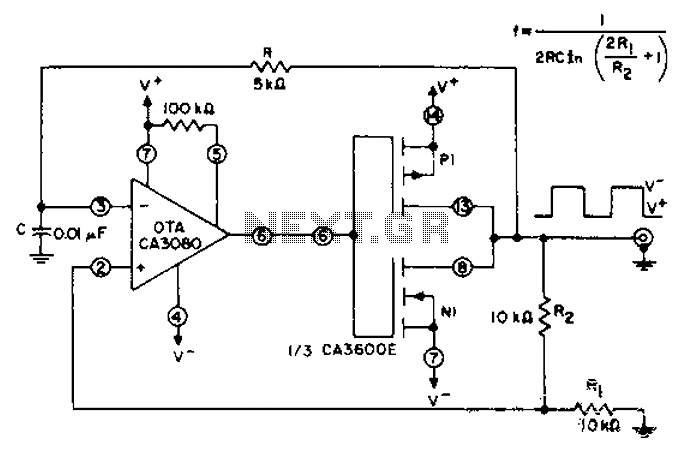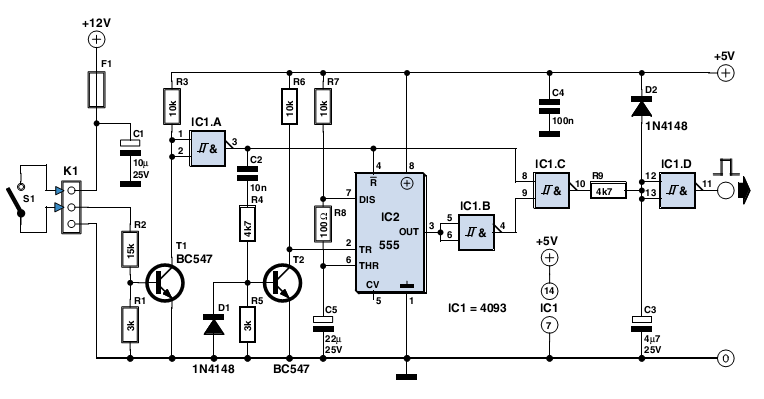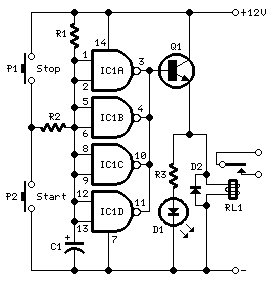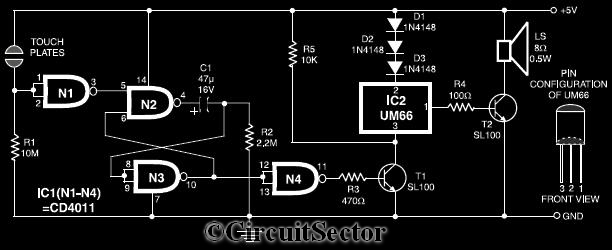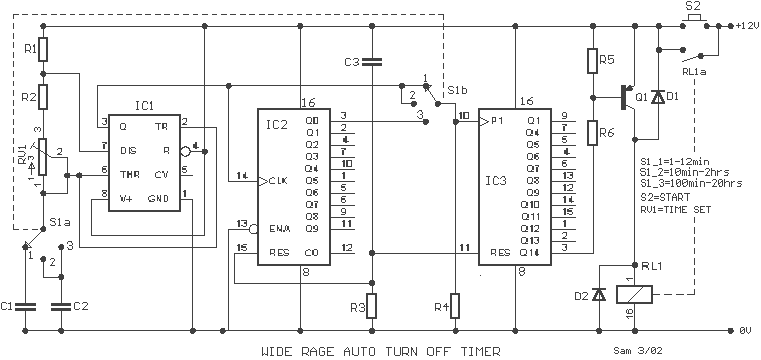
transistor timer
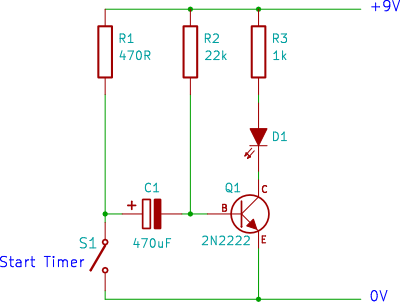
A single transistor timer circuit tutorial designed for beginners in electronics. This is an easy electronic circuit that can be constructed on a breadboard.
The single transistor timer circuit utilizes a transistor as the primary switching element to create a delay timer. This circuit can be particularly useful for applications such as turning on a light after a specified time or creating a simple delay in electronic projects.
The basic components required for this circuit include a NPN transistor (such as the 2N3904), resistors, a capacitor, and a power supply. The configuration typically involves connecting the transistor in a common emitter arrangement. The resistor connected to the base of the transistor controls the charging of the capacitor, which determines the timing interval.
In operation, when the circuit is powered, the capacitor begins to charge through the resistor. The time it takes for the capacitor to charge to a certain voltage level (typically around 0.7V for silicon transistors) will dictate how long the transistor remains in the ON state. Once the voltage across the capacitor reaches the threshold, the transistor will turn OFF, thereby stopping the flow of current through the load connected to the collector.
The timing can be adjusted by changing the values of the resistor and capacitor. A larger capacitor or resistor will result in a longer delay, while a smaller capacitor or resistor will decrease the timing interval. This circuit is an excellent introduction to understanding the behavior of capacitors and transistors in timing applications, providing foundational knowledge for more complex electronic designs.
Construction on a breadboard allows for easy modifications and experimentation, making it ideal for beginners to learn through hands-on experience. Proper attention should be given to the polarity of the components and the connections to ensure correct functionality.Single Transistor Timer Circuit tutorial for beginners in electronics. Easy beginner electronic circuit that can be built on breadboard.. 🔗 External reference
The single transistor timer circuit utilizes a transistor as the primary switching element to create a delay timer. This circuit can be particularly useful for applications such as turning on a light after a specified time or creating a simple delay in electronic projects.
The basic components required for this circuit include a NPN transistor (such as the 2N3904), resistors, a capacitor, and a power supply. The configuration typically involves connecting the transistor in a common emitter arrangement. The resistor connected to the base of the transistor controls the charging of the capacitor, which determines the timing interval.
In operation, when the circuit is powered, the capacitor begins to charge through the resistor. The time it takes for the capacitor to charge to a certain voltage level (typically around 0.7V for silicon transistors) will dictate how long the transistor remains in the ON state. Once the voltage across the capacitor reaches the threshold, the transistor will turn OFF, thereby stopping the flow of current through the load connected to the collector.
The timing can be adjusted by changing the values of the resistor and capacitor. A larger capacitor or resistor will result in a longer delay, while a smaller capacitor or resistor will decrease the timing interval. This circuit is an excellent introduction to understanding the behavior of capacitors and transistors in timing applications, providing foundational knowledge for more complex electronic designs.
Construction on a breadboard allows for easy modifications and experimentation, making it ideal for beginners to learn through hands-on experience. Proper attention should be given to the polarity of the components and the connections to ensure correct functionality.Single Transistor Timer Circuit tutorial for beginners in electronics. Easy beginner electronic circuit that can be built on breadboard.. 🔗 External reference
Warning: include(partials/cookie-banner.php): Failed to open stream: Permission denied in /var/www/html/nextgr/view-circuit.php on line 713
Warning: include(): Failed opening 'partials/cookie-banner.php' for inclusion (include_path='.:/usr/share/php') in /var/www/html/nextgr/view-circuit.php on line 713
